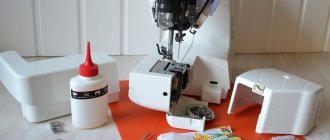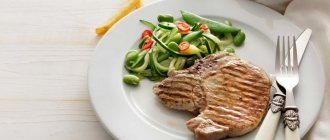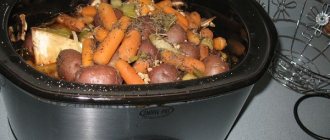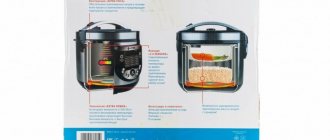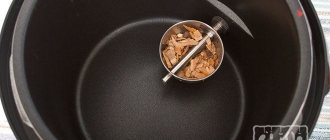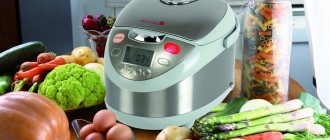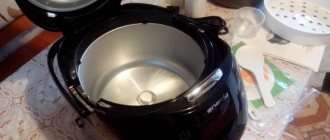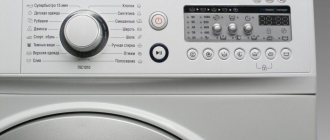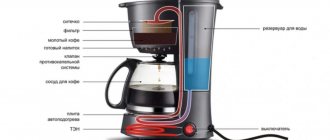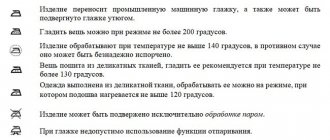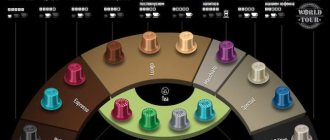Manufacturers of multicookers are trying to create a device that can perform the functions of several devices at once. The modes in a multicooker are becoming more varied and complex. An ordinary home multicooker can cook almost any dish: grill, pasta, boil food in the classic way or steam it like a double boiler. Cooking modes differ in complexity and functionality. Let's figure out how different programs and modes work in a typical multicooker.
Home use of the product
Manual modes
Such programs are a response to user requests. Those who are used to cooking according to their own recipes want the multicooker program to be able to set the heating temperature and cooking time manually.
The first to provide this opportunity was then followed by other manufacturers.
In multicookers of different brands, this cooking option may be called differently, and the basic characteristics will also differ. The minimum temperature that this mode allows you to set is about 30 degrees Celsius. It is convenient for making yoghurts and preparing yeast dough. The upper limit will be different for each manufacturer. The range is 100–200 degrees.
Manual cooking program names: multicook, manual, your mode, multichef and other options. It makes sense to experiment with manual cooking if the owner of the device has a good understanding of the process of preparing a dish and understands what and how to do it. If you have little experience, it is better to start by trusting the standard automatic modes, the results of which will be consistently successful.
Using manual mode without proper experience is fraught with unexpected consequences
Additional operating modes for multicookers
These include the “Stewing”, “Steaming” and “Baking” modes.
“Stewing” is present in many types of multicookers and is the most used mode. With its help you can prepare soup, porridge, jellied meat, broth, side dish, and make baked milk. Naturally, this mode is used to stew meat and fish, including large pieces. In this mode, food looks like it was cooked in an oven at low temperatures.
“Steaming” is necessary for those who are on a diet, as well as for young children. Using this mode, you can steam meat, fish, eggs, manti, dumplings and more. It is also used for heating food. This mode can be partially replaced by the “Cooking” mode. Essentially, this mode creates a double boiler in a multicooker and the result is something 2 in 1.
“Baking” is a complete replacement for the oven. Using this mode you can bake muffins, pizzas, omelettes, biscuits and more. This mode is also used for pre-frying vegetables before stewing them. Some housewives successfully use the “Baking” function for preparing chops, meat and fish. The mode operates in the interval from half an hour to an hour. Cannot be replaced by any other modes.
Automatic modes
There are several automatic modes that ensure high quality dishes.
"Warming" program. A fairly simple option that allows you to keep a ready-made dish warm while waiting for lunch or dinner. Some housewives use this mode to defrost or melt butter. In most multicooker models, heating turns on automatically after cooking.
The stewing mode at a given temperature in a multicooker is very similar to conventional cooking in an oven at low temperatures. Well suited for cooking porridges, jellied meats, broths, in a word, those dishes that require simmering. The finished product is aromatic and uniform in structure. The timer can be set from half an hour to twelve hours.
The baking or baking option is convenient for those who like to prepare biscuits and sweet pastries. Non-trivial options for using “baking” include using this program for frying vegetables or meat products.
Baking mode in a multicooker
The mode configured for cooking porridge may differ in name and temperature settings. This program is also suitable for pilaf, crumbly porridges, and porridges with milk. Cooking time varies from forty minutes to an hour.
Some models for pilaf have a special mode, in which the food is browned on the bottom and the rice turns out crumbly. In this mode you can bake potatoes or fry dumplings.
The “Krupa” or “Buckwheat” programs are intended for preparing crumbly, but not browned porridges. In this case, the liquid is thoroughly evaporated. It should be remembered that the multicooker will begin counting the cooking time after it has heated the internal contents of the bowl to operating temperature. Depending on the volume of the bowl and the power of the device, this will take an additional 10–20 minutes.
Preset program options
Double boiler. This program allows you to cook food using steam. The dishes are specific in taste, but more healthy than those prepared in the traditional way. To use this mode, you will need an additional plastic container on which to place the food. Water is poured into the bottom of the bowl, then a plastic stand with food is inserted. The mode works when the lid is closed.
Almost all multicookers have a frying mode. Some models combine frying with a baking program. The program allows you to fry meat, eggs and other foods. Manufacturers usually recommend using the lid-open mode to constantly monitor the process - just like in a frying pan.
The Pasta program allows you to prepare dough dishes such as dumplings, pasta, dumplings. Resourceful housewives note the similarity of this mode with modes like “Porridge” and use them if “Pasta” is not in the multicooker’s arsenal. Using this functionality is not possible with delayed start.
Options for dishes that can be prepared in a slow cooker
Another of the automatic modes – “express” – is used for quickly preparing simple dishes in a multicooker. The device quickly evaporates the liquid from the stored products and intensively fries at the end of the cycle. When using this program, classic navy pasta, fried potatoes and similar dishes are perfectly prepared.
Smoking program - not available in all multicookers, allows you to smoke meat, fish, sausages. To smoke, you need to place a small container with cherry or other wood chips in a special bowl and place the products on the grates. Two smoking options are available: hot and cold. Hot occurs at a temperature of about 125 degrees, cold - at 30. For cold, only products specially prepared by marinating are used. The process occurs more intensively than when using traditional technologies. When using this mode, you should take care of ventilation in the room, since either during the process or when opening the multicooker after cooking, the smell of smoking will enter the kitchen.
Pressure cooker - this option allows you to cook dishes by creating excess pressure in the multicooker pan. The disadvantage of such a program is the inability to add ingredients during the cooking process without an emergency release of pressure. This mode is convenient for preparing jellied meat or other dishes that require a long cooking time.
The delayed start function is not a pure cooking mode, but it has a great impact on convenience. The program allows you to postpone cooking for up to a day. However, the function is not available for baking and frying.
Sterilization and pasteurization. These programs can be distinguished as separate, although in some models they are presented under other names. Pasteurization involves heating to 70 degrees to preserve the freshness of products and get rid of unwanted microflora, which are killed during heat treatment. Sterilization is intended for processing dishes - children's or intended for canning. The process occurs at a temperature of about 100 degrees. In fact, this mode duplicates the “steamer”, since sterilization occurs under the influence of hot steam.
The “Dessert” mode is not present in all models; it is intended for preparing sweets such as candies and caramel.
Operating principle of the pressure cooker mode
How does a multicooker cook?
Multicookers from different manufacturers prepare the same dish in different ways. Both the temperature in the multicooker modes and the duration of the cooking itself may differ. However, the approximate temperature range at which a particular dish is prepared is always the same, as is the approximate cooking time.
In addition, knowing what temperatures are used in a multicooker in a particular cooking mode will help you use the “multicook” function correctly and independently set the appropriate temperature values and cooking duration.
"Porridge" mode
This mode is used for preparing porridge from milk (or a combination of milk and water). The temperature is set in the range of 95-100C, and the cooking time can take from 20 to 60 minutes. At the same time, it is important to follow the recommended proportions of cereal and liquid, because each porridge is boiled differently and, due to inexperience, you can end up with either too boiled or too dry porridge.
“Extinguishing” mode
In the stewing mode, the products are initially gradually heated to a temperature above 100C, and then also gradually lowered, and continue to cook at a temperature of 90-95C. If you do not lower the temperature in time, the water will quickly boil away and the dish will fry instead of stewing. When you select the automatic program, the multicooker will independently monitor the readings of temperature sensors and lower the temperature in time. The extinguishing time can vary from 1-2 hours to 8-10 hours if necessary.
“Frying” mode
Temperature 150-155C is good for baking and frying. In this case, you need to consider the type of product you are going to fry: meat, vegetables or fish. Depending on this, you should set the frying time: for vegetables - an average of 10 minutes, for fish - 15 minutes, meat - 30-40 minutes. Thanks to the non-stick properties of the bowl, you can do without the use of oil.
Temperatures above 160C-170C are ideal for deep frying when the oil needs to boil.
Steam mode
One of the healthiest methods of cooking, which allows you to preserve all valuable vitamins and elements, and cooking without oil makes the prepared dish low-calorie, juicy and aromatic. Products are cooked at a temperature of 115-120C, and the cooking time depends on the type of product: vegetables and fish need 10-15 minutes, and meat will need 40-60 minutes. At the same time, it is better to avoid pieces of meat that are too large; they may not be completely steamed and remain raw inside.
Temperature in the multicooker under different modes and features of each program
Each manufacturer supplies the device with instructions that allow you to understand the basic parameters of use. The lowest temperatures are used when creating yoghurts and heating dishes, the highest temperatures are used when frying and deep-frying. 35–40 degrees ensures normal preparation of yogurt and preparation of yeast dough. At temperatures of 50-80 degrees, excellent drinks such as punch, tea, and mulled wine are obtained.
80-100 degrees is the most common range for most dishes. Porridges, soups, jams and other dishes that require simmering are perfectly cooked at these temperatures.
Temperatures over 100 degrees are used when cooking meat, baking, and roasting vegetables. If the device has a pressure cooker function, then various soups can be cooked at high temperatures.
The highest temperature – 170 degrees – is used for cooking meat in batter and french fries.
Classification of multicookers
According to the power range, multicookers differ in:
- devices with a minimum power of 450 W;
- average power devices 800 W;
- devices with a maximum power of up to 1500 W.
Devices with minimal power
These multicookers include small devices with a power of 450 W, whose pan volume does not exceed 3 liters. This model can suit one person in terms of the amount of prepared food. But it should be taken into account that the pan cannot be filled to the brim, therefore the volume decreases. Also, due to the low power, the cooking time will be significantly increased.
Multicooker Moulinex MK 7001
Medium power devices
A multicooker power of 800-900 W is considered the best. It is the models with medium power that have an average price range and are popular among consumers. This is an ideal option for a family of 2-4 people. The advantages of medium-power devices: economical energy consumption, a small amount of time is spent on cooking. It is better to choose models with a bowl volume of 4-5 liters. Thanks to this, the optimal option in terms of electricity consumption and cooking time will be achieved. If you require a capacity of more than 5 liters, then the power of the unit should be higher.
Medium-power multicookers already have the ability to cook bread and baked goods (muffins, pies and other baked goods). Of course, you won’t get a crispy crust, but the dough is baked quite well. The absence of a crust can be hidden with powdered sugar or some kind of cream.
Recently, multicookers with a 3D heating function have appeared. Since the lid has a built-in heating element, the baked goods come out with a crispy crust.
Devices with maximum power
The disadvantage of powerful multicookers (1400 - 1500 W) is the high consumption of electricity. But if the family is large, then it is advisable to choose a model with a 10-liter pan and a power of 1.4 kW (as in the Sinbo SCO-5006 model).
Multicooker Sinbo SCO-5006
This model allows you to prepare large volumes of food for a large family in a short time. But it should be noted that the cost of powerful models with large volumes of pots will be high.
Differences between modes in different models
Options for cooking programs are provided by manufacturers. Naturally, more expensive and multifunctional models have greater variability and a range of tasks to be solved.
Thus, Mulinex multicookers offer up to one hundred automatic operating programs; the Scarlett brand has about twenty of them. The same option can be called differently.
To clarify, when purchasing, be sure to look at the characteristics of the product, without getting carried away by the attractive names that manufacturers come up with for the simplest programs.
Cooking meat dishes
So, the options “Stew”, “Soup”, “Milk porridge” are almost the same. They involve cooking the dish at a temperature of about 90 degrees Celsius for a long time.
Some multicookers have a “Crust” program, which allows you to fry the prepared dish with a crispy crust. In some ways, this mode is reminiscent of frying, but, according to reviews from consumers who have used both, there is still a difference.
Manufacturers do not advertise the intricacies of a specific program; the user sees only general characteristics: temperature, cooking time, presence of excess pressure. If you do not cook for gourmets, then small differences in the taste of the finished dishes are insignificant.
Common operating modes
These modes include functions that have the following inscriptions: “Buckwheat”, “Pilaf”, “Milk porridge”. They are found in almost all models of these household appliances. This is roughly what they look like on the panel of some models:
multicooker modes
In the “Buckwheat” , all types of cereals are prepared, from which crumbly porridges can be obtained. The principle of operation of a multicooker in this mode is as follows: the evaporating liquid is absorbed into the product, and the device begins heating the porridge. The grains become soft, but not overcooked. The “Buckwheat” mode takes a little more than half an hour.
“Pilaf” mode was originally intended exclusively for rice dishes. But savvy people discovered that this function is great for preparing navy-style pasta and baking potatoes. The principle of operation of this mode is similar to the previous one, but in the last 10 minutes the frying function is activated. The result is dishes that are fried from the bottom. The entire regime takes about an hour.
If the multicooker does not have the “Pilaf” mode, then for the dish of the same name you can use other modes, such as “Porridge”, “Buckwheat”, “Grains”, “Roast”. Or you can fry vegetables and meat in “Baking”, and then use the “Soup” or “Stew” mode.
“Milk porridge” mode is especially loved by housewives. After all, with the help of its automatic timer, set in the evening, you can get delicious porridge for breakfast, without much hassle. The main thing is not to forget, in addition to setting the timer, to put cereal and milk in the multicooker.
